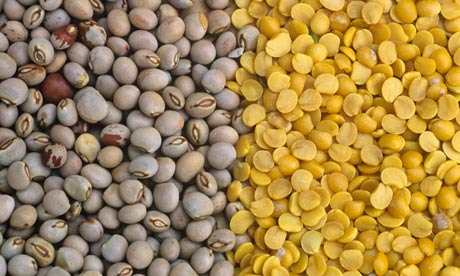Today we are focusing on the food security crisis in the Sahel.
According to the United Nations Food and Agriculture Organisation, in 2012 approximately 18.7 million people in the Sahel region suffered an extreme food crises, this is due to the poor rainfall and thus failed harvests. Currently, 20 million people in the region are at risk of food insecurity and 2.5 million of them need immediate lifesaving food assistance. An estimated 5 million children younger than 5 will suffer from malnutrition in 2014. This food insecurity is threatening the lives of more than 1 million children in 9 countries, Burkina Faso, Cameroon, Chad, Gambia, Mali, Mauritania, Niger, Nigeria and Senegal.
The Sahel is a band of land in central Northern Africa. The bordering countries; Burkina Faso, Cameroon, Chad, Gambia, Mali, Mauritania, Niger, Nigeria and Senegal, have all been affected by the lack of rainfall and are all suffering from hunger.
 |
| Areas that are suffering from food insecurity. |
Why people are going hungry in the Sahel?
People are going hungry in the Sahel because of degraded solid, erratic rainfall and a high increase in population. All of these are major factors that impact food growth. This leads to food scarcity in food production. The main reason as to why the people in the Sahel are going hungry in because of the infamous Sahel drought. The Sahel drought is a series of historical droughts, beginning in approximately the 17th century. The frequency of droughts in that region is thought to have increased from the end of the 19th century.
 |
| The severity of the drought in the Sahel regions. |
Social Impacts:
A major social impact is that people are dying. Children are suffering from malnutrition and are likely to die before the age of five. The problem has escalated to the point that newborns are not registered before the age of five as the death rate is so high. The people of Sahel are now relying heavily on foreign aid who provide the basic necessities such as food and water. Violence in Mali has been further problematic to the ongoing food crisis in the Sahel region. It has even sent refugees fleeing the conflict into nearby countries. Already, over one million people have fled for their homes in the Sahel and are now refugees or relocated within their own countries. Niger and Chad, neighbouring countries of Mali, are now faced with an influx of refugees and little resources to support them. To make matters worse, diseases such as cholera and measles remain a constant threat. The reoccurrence of the food crisis has taken away the regions resilience and coping abilities which has devastated citizens of the Sahel region who already suffer from long term poverty. Many never recover and are unable to withstand more pressure and setbacks.
 |
| A child suffering from malnutrition. |
Economical Impacts:
Due to the shortage of food, prices have risen dramatically. People now cannot afford to pay for a nutritious meal. Some are outraged and are reluctant to pay the high prices. Meanwhile, others can't even afford to buy food for their large families, only living on handouts from organisations.
Environmental Impacts:
The obvious environmental impact is that the crops cannot grow and the livestock is dying due to the inconsistent rainfall and immense heat. This is the sole cause of their hunger and starvation.
Solutions
There are a few possible solutions to the Sahel food crisis. A drought resistant seed has been introduced throughout the region.
 |
| Drought resistance seed. |
 |
| Drought tolerant seed multiplied in DTMA countries in 2012. |
About approximately 500,000 hectares in Burkina Faso and Niger have been treated with planting pits and other simple water harvesting systems. This has evidently benefited the counties. For example, in Niger, farmers have increased the number of trees on their land. Trees were not planted, instead farmers protected those that emerged spontaneously on their farms. Over the span of 20 years, farmers operating on 5million hectares of land throughout Niger added an estimated 20million trees to the landscape. These trees provide numerous benefits including an increase in soil fertility and provides food for livestock, fruit and leaves for human consumption, fibre, firewood and materials for traditional medicines. But most importantly, farmers are observing that these procedures are significantly improving crop yielding. According to a 2009 report I am international food Policy Research Institute, new systems on five million hectares throughout Niger have increased annual agriculture by about 500,000tonnes. This amount of food can feed 2.5 million people!
Another possible solution is to create awareness of the agroforestry system. While it supports sustainable agriculture it is still not carried out by every farmer. By organising tours for farmers to visit other farms who have increased their crop yielding through this method, we can spread the word and thus increasing the overall food supply. Not only will this spread awareness for the system, it will also prompt farmers to share their successful methods with each other, boosting the overall success rate of crops in the Sahel.
I'm many countries in Africa, farmers have no legal rights to the trees on their farms. National policies and local authorities need to take action in including agroforestry into agricultural developments to give farmers the right to their trees. This will give farmers motivation to invest in planting trees as they will have a clear right to them.
Although there are major challenges in reducing famine in the Sahel, we have the resources and knowledge to overcome it. There is no time to lose for food security to be achieved!
References
References
- Sahel - Food Insecurity and Complex Emergency PDF (compass)
- Food Insecurity and Humanitarian Implications in West Africa and the Sahel PDF (compass)
- http://www.huffingtonpost.com/anja-tranovich/food-security-solutions-sahel_b_1651153.html
- http://www.acaps.org/en/news/sahel-food-inecurity
- http://www.wri.org/blog/2014/02/improving-food-security-sahel-difficult-achievable
- http://sahelresponse.org
- http://www.unicefusa.org/mission/emergencies/food-crises/sahel-food-crisis
- http://www.care.org/emergencies/sahel-hunger-crisis
- http://www.bbc.com/news/world-africa-26021145
- http://ec.europa.eu/echo/files/aid/countries/factsheets/sahel_en.pdf
- http://www.oxfamamerica.org/take-action/save-lives/past-emergencies/food-crisis-in-the-sahel/
- http://www.abc.net.au/gardening/stories/s2577681.htm
- http://www.un.org/africarenewal/magazine/december-2013/sahel-one-region-many-crises
- http://dtma.cimmyt.org/index.php/about/background
[All sites were last accessed on 09/08/15]